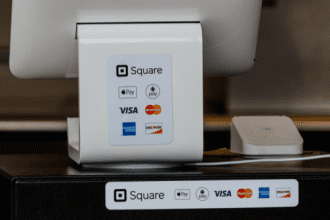AI ghost apps: reclaim weeks of work in just 30 minutes
Creating an AI ghost app has become one of the simplest and most practical ways to automate daily work, especially now that vibe coding employing AI to create whole codebases begins to reveal its weaknesses. Rather than depending on massive stacks of AI-written code that still require debugging, maintenance, and technical oversight, ghost apps rely on something much simpler and more powerful: doing one specific task you do every day and bottling your judgment into a repeatable AI system.
A ghost app isn’t an app. There’s no interface, no dashboard, no login, and no complex backend. It’s simply an AI model that runs within a constrained set of instructions with just a few examples and clear limits. You speak to it naturally, the same way you would explain something to a new team member, and it performs the task over and over again with surprising consistency. If your task goes from text to text, the ghost app will operate as the tool. You are not building software, but building an invisible assistant.
The advent of vibe coding spread the belief that AI could replace software engineering entirely by creating applications from plain-language prompts. Although the idea is potent, it typically results in bloated codebases packed with duplicated logic, exotic architecture choices, and bugs that even seasoned programmers grapple with deciphering. Ghost apps have another philosophy. Rather than allowing AI to create software, ask it to do a job. The output is not a codebase. It’s a completed task. Traditional engineering layers disappear. The ghost app becomes the workflow.
The structure is always the same, so you can build one in roughly thirty minutes. First, you choose a small repetitive task that steals your attention each day. Then you define the task in simple English no code, no technical complexity. From that point on, you define rules. These rules define precisely what the AI should do and what it should avoid. You then offer examples, often referred to as gold-standard samples, that show the AI what great output looks like. Paired with instructions, constraints, and examples, the ghost app starts to act like a focused digital assistant operating inside a narrow and predictable sandbox.
Ghost apps do what they do because they rely on three ingredients: clarity, constraints, and context. Clarity means selecting one job and avoiding scope creep. Constraints are like guardrails that prevent the AI from hallucinating or improvising. And context your examples, your templates, your rubric introduces your expertise to the system so it performs the task the way you would. Most people underestimate how much value is within their own judgment. When you capture that judgment and teach it to the AI, the ghost app becomes an extension of your brain.
An example is lead qualification for sales teams. You provide the AI your qualifying rubric, your deal-breakers, and examples of leads you’ve approved or rejected. Then you test it on real leads in your inbox. With some changes, the ghost app starts generating the same decisions you would make, but in seconds rather than minutes. This pattern persists for marketing teams, who turn bullet points into polished copy, operations teams, who turn messy notes into clean reports, HR teams, who rewrite interview notes into structured summaries. Wherever you regularly turn rough inputs into refined outputs, a ghost app can take over.
The benefits add up quickly. If a routine consumes 20 minutes, and the ghost app takes five of that, that’s fifteen minutes saved each day. Multiply that over a year, and you save well more than 60 hours over a whole workweek from a single automation. If you develop three or four ghost apps, you begin to feel that you have recruited an invisible team which quietly, consistently, and without complaint sits beside you to help you silently work.
Of course, ghost apps are not without flaws. They can shift over time as your company changes, so you must update instructions or add new examples sometimes. You also have to take into account data sensitivity and adhere to the privacy provisions you would follow with any internal tool. And, as happens with any AI system, human control should continue over high-stakes decisions or quality checks. But if you keep a watchful eye on them, ghost apps are incredibly reliable because they only operate within the constraints you define.
What makes ghost apps great is how small they are. You don’t require engineering resources, complicated integration pipelines, or a large rollout. You begin with one task and one set of instructions for the first one. If you like the results, then you build a second ghost app, followed by a third. Eventually, you have a collection of focused assistants: one that qualifies leads, one that summarizes calls, one that drafts proposals, one that cleans reports, and so on. Each one is narrow, consistent, and predictable. Combined, they make up a quiet AI workforce that deals with the background noise of your job so you can concentrate on strategy and creativity.
The actual shift isn’t technological it’s mental. The winners in this new era are not just people who can code or prompt AI. They are those who can succinctly convey their thinking, rules, and judgment with enough detail that an AI can carry it forward. When you create that first ghost app and watch it take up some of the monotony of your day, you realize that automation doesn’t need a platform, a codebase, or a developer. It only requires clarity. From there, everything gets faster.




















